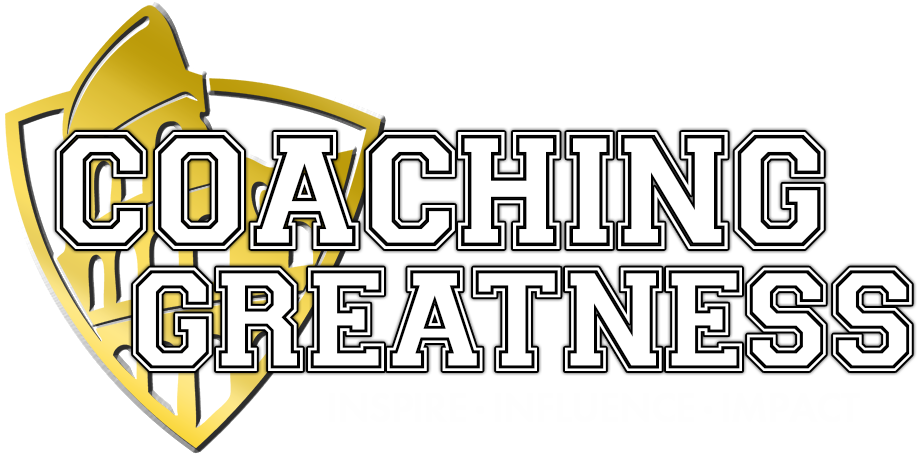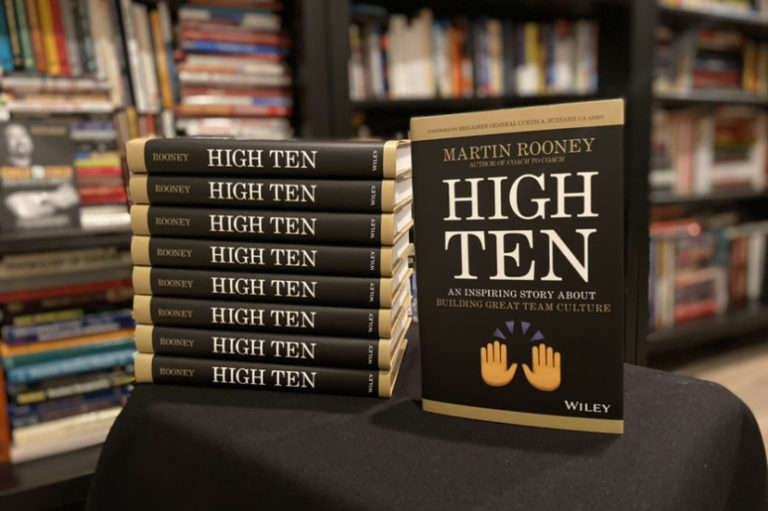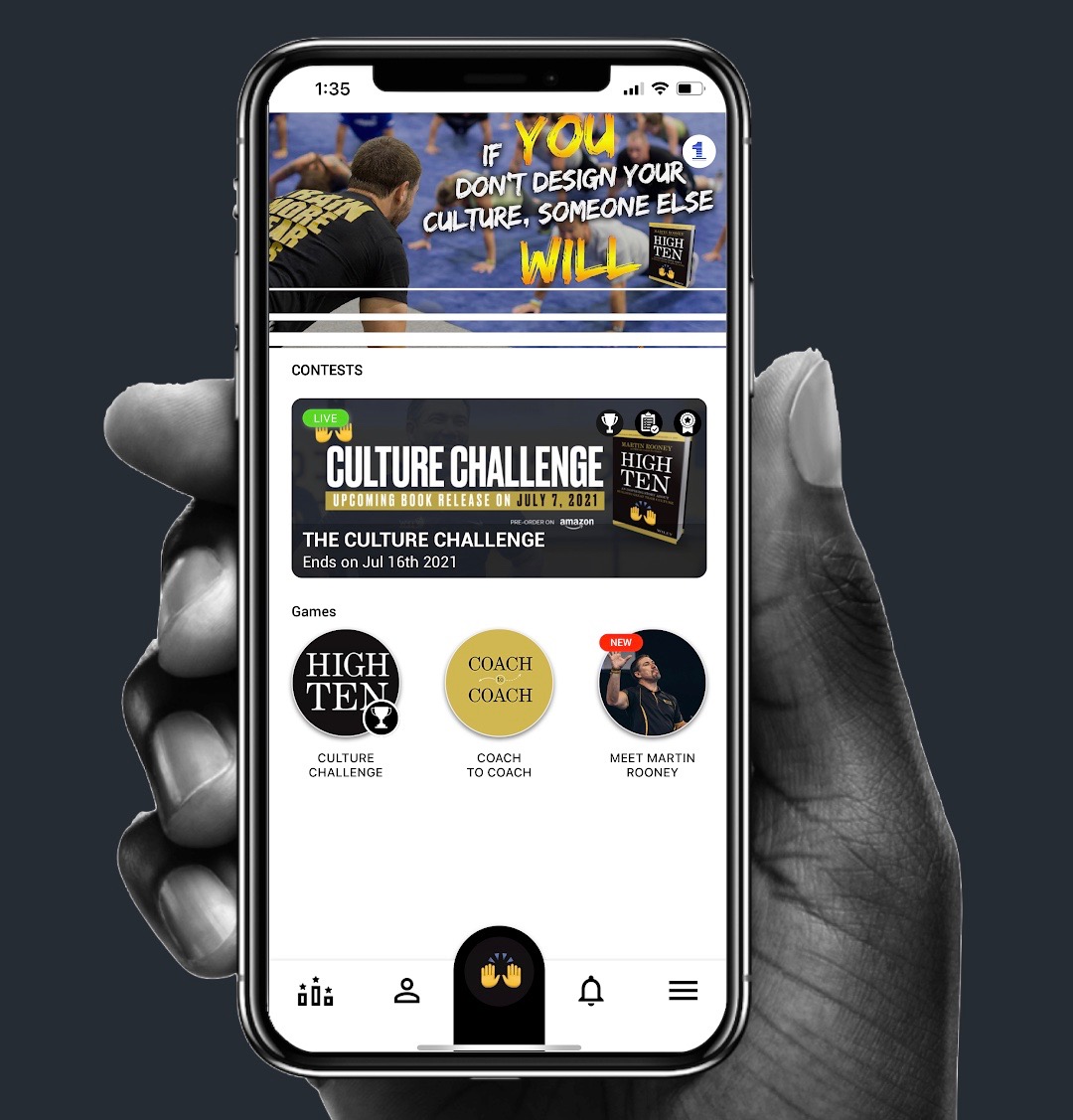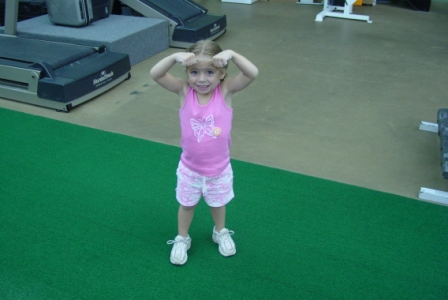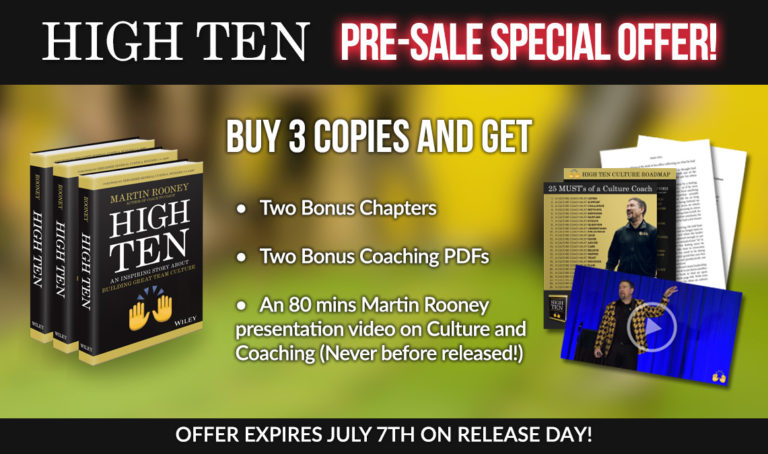
Culture isn’t a “sometimes” thing – it’s an all-the-time thing.
And one place that understands that is the University of Notre Dame. Whether you are a fan of Notre Dame or not is not important. This email is to share with you a blueprint for your own family and business culture that I created after visiting the Fighting Irish this week.
Last weekend, I drove the 660 miles to South Bend to drop off my oldest back at school after her first fall break. The difference about this trip was instead of just one daughter, all the Rooney girls made the trek to Indiana.
Since this was the first time my three other daughters were visiting Notre Dame, I was interested to see how they would respond to the experience. I was worried after all they had heard about the school, maybe “ND” wouldn’t live up to the “hype.”
But knowing about the culture there, I should have known better.
After the 11-hour drive, we parked in front of the Compton Family Ice Arena, got tickets to the game, and within 10 minutes of leaving the car, we were cheering on the Notre Dame team with the thousands in attendance. As the band played the Notre Dame Victory March after each goal (and Notre Dame won 6-0!) I could already see the traditions of the school were having an effect on my daughters. At the end of the game when we all swayed arm-in-arm singing the Alma Mater, my kids were already asking for hockey jerseys and when we could come back for another game.
Culture isn’t something you see – it’s something you feel.
On Saturday, we woke up and toured the campus. The grounds were buzzing with excitement even though the USC – Notre Dame night football game was still over 10 hours away. We knelt at the Grotto, explored the Sacred Heart Basilica, took photos in front of the Golden Dome and Hesburgh Library, and then visited the one place to make their cultural immersion complete: the Hammes Bookstore.
To fully feel part of any culture, you have to look the part too.
As a big college football (and Notre Dame) fan, you might have thought I was nervous about the game. Since the USC – Notre Dame rivalry is one of the oldest in the sport and has led to upsets over the years, I had reason to be uptight. But that feeling was nothing compared to the apprehension I experienced when I let my wife and daughters loose in the bookstore. As an expert group of shoppers that closely resembled a black-ops military mission, they all bolted in different directions, and retuned with arm loads of gear they deemed absolutely necessary to properly represent the Fighting Irish. To maintain the integrity and morale of the trip, you can be sure I didn’t dare press my luck by saying, “no.” As the leader of the culture in your home, you must learn to choose your battles wisely.
To wear a uniform means you don a certain jersey. A uniform culture means everyone acts a certain way.
During the football game, my daughter asked why the player’s didn’t have their last names on their backs. I answered that when you wear a jersey at Notre Dame, you don’t play for the name on the back of the jersey, you play for the team; for the history and tradition of the program. If you are going to represent the traditions of a culture the right way, you have to follow the rules and expectations that culture demands. When that type of uniform behavior happens, the culture is easy to see – and defend. Not everyone will always uphold the values, but that is when culture works at its best. That’s when the person or persons not living up to the expectations is reminded “that’s not how we do it here.” When that type of regulating occurs, you know you have a special culture.
A culture must stand for something or fall for anything.
Over my career, I have been lucky to visit, consult with and coach at many universities. At each place there was a different “feel,” uniform and traditions that defined the culture of that school. Now having visited Notre Dame numerous times (and my daughter living there for over two months), I can say there are obvious things they stand for to maintain the culture “Under the Dome.” Even during the football game, the crowd was reminded the university is not just about sports, but also about academics, faith and service.
If there is one kind of service your culture should not be into, it is lip service.
Values shouldn’t just be things on your lips – they should also be in your heart. If you do want to work on your culture, you can’t just talk about it – you have to be about it. To help you get your culture right, I created the following ten steps for you. Whether it is for the culture of your business, team or family, here’s a blueprint to help design the culture you want instead of ending up with the culture you get.
10-Step Blueprint For Building and Maintaining Culture
1. Define It Clearly
You won’t get the culture you hope or wish for, you’ll get the one you define. The first step in building your culture is to develop clarity about the culture you want. As the leader, you must precisely clarify the values for which your company stands and identify the behaviors which will and won’t be tolerated.
2. Teach It Intentionally
If your culture is ever going to be “caught” by your people, it must first be properly “taught” to your people. In particular, you should make sure processes are always in place to on-board and indoctrinate new people while always having regular ongoing forms of cultural continuing education present.
3. Train It Purposefully
Some values are easier to talk about than they are to do. There’s a big difference between understanding something and doing it. Once the expectations of your culture are set and taught, they must then be practiced. Over time, rituals and traditions will develop.
4. Drive It Publicly
Your mission and vision shouldn’t be kept a secret from your people. The best cultural leaders lead from the front. As the leader you must constantly communicate your culture to the team.
5. Live It Daily
Culture isn’t built in a day, but it can be lived on the “daily.” Culture is not created by talking about it, it is created by living it. If you preach what to practice, you must also practice what you preach.
6. Check It Periodically
Like a doctor, the leader must regularly examine the culture. Like any living thing, your culture is also going to require systematic check-ups. These are required to place your finger on the pulse of the health of your culture.
7. Uphold It Continuously
Your culture is like a garden, and like any garden, your culture will require constant nurturing. Like a gardener, you need to constantly fertilize and stimulate your culture never forgetting that a great culture can take years to build and only minutes to destroy.
8. Change It Occasionally
Like a detective, the leader should be on the lookout for changes because while change of your culture is mandatory, positive change is optional. As times and technology change, you must always be prepared adapt.
9. Share It Inclusively
Culture doesn’t begin in the workplace. Culture starts in your home. Keeping your home and work life separate is a big mistake. Include the people you love with the work you love.
10. Enjoy It Thoroughly
If you follow the recipe for a great culture, you can’t leave out the “fun.” The ultimate goal for your culture is to produce an environment and having fun doing it.
The highest level of culture is when you feel part of something bigger – something that feels like “Family.”
On Sunday went to mass in the Basilica and then went to breakfast with the whole family.
That meal included a huge Dutch pancake and I knew it would be the last one for all of us together until Thanksgiving. As my family were all laughing and carrying on the way we do it in the Rooney culture, I sat back for a second and watched them all. That moment was my greatest gift from the trip to Indiana because it helped me realize once again that family is everything.
Throwing you a big High Ten!
Martin Rooney
P.S. Want more lessons how to build a great team culture? Then it’s time to finally read High Ten.
Would you like to be better able to coach for culture? I promise you will benefit from the easy-to-read and entertaining stories within High Ten. Thousands of coaches around the world have gotten the lessons within these two books. Don’t miss out!
